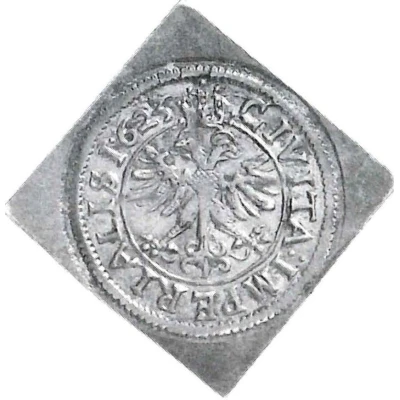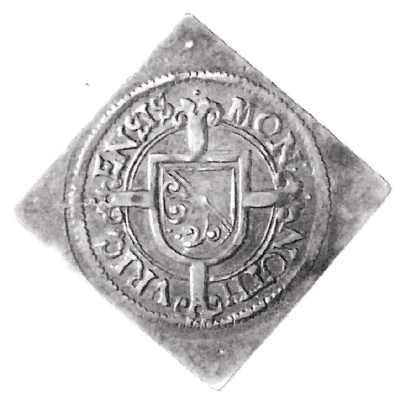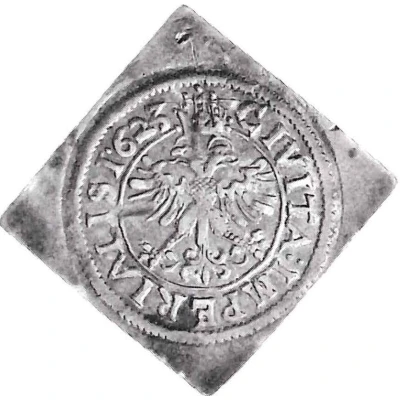


© Sincona AG
Batzen Klippe; 2 batzens weight
| Silver | 5 g | - |
| Issuer | City of Zürich |
|---|---|
| Period | Free imperial city (1218-1648) |
| Type | Non-circulating coin |
| Years | 1623-1624 |
| Value | 1 Batzen (1⁄32) |
| Currency | Thaler (1621-1651) |
| Composition | Silver |
| Weight | 5 g |
| Shape | Klippe (Hand cut) |
| Technique | Klippe |
| Demonetized | Yes |
| Updated | 2024-10-08 |
| Numista | N#242190 |
|---|---|
| Rarity index | 100% |
Reverse
Crowned and nimbate double-headed displayed imperial eagle.
Script: Latin
Lettering: CIVITA : IMPERIALIS 1'623
Translation:
Latin (unabridged): Civitatis imperialis.
English: Of the Imperial City.
Comment
Varieties of this type are known to exist:• Variant 1623 (Winterstain Klippen 13b; HMZ 2-1154fᴷᴵ)
Obverse legend: MON : NO TH VRIC ENSIS ·
Reverse legend: CIVITA : IMPERIALIS 1'623
Christian Winterstein reports one piece in the Schweizerisches Landesmuseum Zürich, weighing 4.43 g and one piece in a private collection weighing 4.59 g.
• Variant 1624 (Winterstain Klippen 14c; HMZ 2-1154hᴷᴵ)
Obverse legend: MON : NO · TH VRIC ENSIS
Reverse legend: CIVITA : IMPERIALIS ❀ 1624 .
Christian Winterstein further reports:
⸰ One piece in the Schweizerisches Landesmuseum Zürich weighing 5.04 g:
© Sincona AG
⸰ One piece in the Münzkabinett und Antikensammlung der Stadt Winterthur, weighing 5.28 g.
⸰ One piece in the Bernisches Historisches Museum, weighing 5.02 g.
⸰ One piece in the Museum Allerheiligen Schaffhausen, weighing 5.68 g.
⸰ Other pieces in private collections
Interesting fact
One interesting fact about the Non-circulating coin Batzen (Klippe; 2 batzens weight) 1623-1624 from City of Zürich made of Silver weighing 5 g is that it was minted during a time of great economic and political change in Europe. The Thirty Years War had just ended in 1648, and many cities and states were struggling to rebuild and reassert their power. The City of Zürich, in particular, was known for its strong economy and financial system, and the minting of this coin may have been a way for the city to demonstrate its wealth and influence. Additionally, the use of silver in the coin's production suggests that it may have been intended for trade or exchange with other regions, highlighting the city's connections to broader economic networks.



